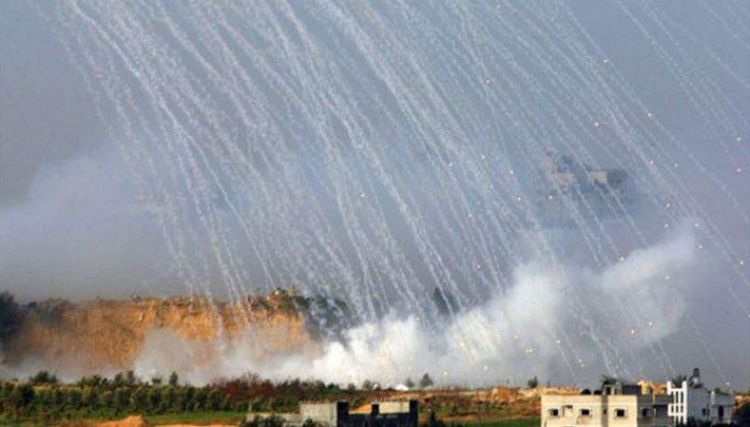Private, Baladi News
Russian warplanes have extensively used the incendiary cluster bombs during the last month in their ongoing campaign on the countryside of Aleppo, where hundreds of recordings and images show the distinctive rainfall of the incendiary sub-munitions ZAB2.5 which resemble the slow fall of meteors.
The Russian use of these bombs is characterized by being launched from high altitudes causing the early opening of incubators and the release of incendiary sub-munitions over a wide area with a radius that may sometimes reach 100 meters.
Unlike anti-personnel cluster bombs, such incendiary cluster munitions can be witnessed while landing and therefore avoided, especially at night, which could justify the limited number of injuries resulting from them compared to anti-personnel cluster munitions. Many activists reported the fall of these bombs around or near them and documented their large effects on the targeted areas to the extent of making some holes in the asphalt as a result of the high heat generated by these bombs, which caused hundreds of fires in the targeted areas.
One of the most important remarks about these bombs is the state of panic caused when they were first used, which spread with the news that says there are phosphorus bombs of white phosphorus bombs, where phosphorus is linked to the battle of Fallujah, as hundreds of people were killed when America used it against the Iraqis in the city.
Phosphor
The bombs that are recently being used heavily are incendiary cluster bombs, most of which date back to the Soviet era in design and possibly manufacture, where two types of the spreading incubators for cluster bombs in Syria were mainly used, which are: RPK250 and RPK500, and both contain minor assorted ammunition, including the incendiary ZAB2.5. No one knows exactly the idea of naming these bombs as "phosphorous bombs" came from , perhaps because of the similarity of the crash scene with the scenes from Fallujah and Gaza, which have deeply- rooted in the mind as being phosphorous bombs with a "terrifying" effect.
In fact, these bombs do not contain phosphor to make them phosphorous bombs or "radioactive", but they are incendiary bombs, based on their impact on means that generate very high temperatures with several designs that differ from the white phosphorus bombs that are used for other purposes; impacting both physically and psychologically on the enemy and forming curtains of smoke to obscure the enemy.
ZAB 2.5
As the figure 2.5 next to the name suggests, this bomb weighs two and a half kilograms and it has three types that were intensively used in Syria. These bombs were used first by the regime in a limited way, then by Russia, which made them the weapon of the current phase of the battles. The active substance of these bombs consist of Thermite, or Thermite with the fuel mixture and do not contain any of the phosphor compounds.
Thermite
It consists of a mixture of iron and aluminum oxide, which generates a sufficient temperature to melt the different metals. One of its main uses is smelting the steel when doing maintenance to the rails aiming at melting it on the ground and to form the rail links. Thermite generates high temperatures exceeding 1,000 degrees. These bombs continue to flare up between two minutes to ten minutes depending on the type.
It's noted that activists and civilians video these bombs very closely and stay in areas that contain several bombs of this kind which denotes that they are not white phosphorus bombs because the latter cause severe irritation to the respiratory organs and burns when contacting the skin. However, such conditions had not been documented in Syria yet during the recent Russian campaign.

